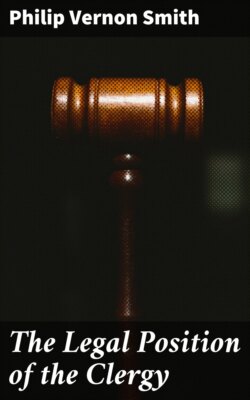Читать книгу The Legal Position of the Clergy - Philip Vernon Smith - Страница 9
На сайте Литреса книга снята с продажи.
Оглавление3. Again, like our civil law, our ecclesiastical law is in part written and in part unwritten or customary. Foreign canon or conciliar law or papal law is only binding in England so far as it has been received by immemorial custom, and has thus become part of our unwritten law, or has been incorporated into our written law by the ratification of an Act of Parliament, or a canon or constitution of our own Church; and the binding force of the English Pre-Reformation canons, ordinances, and provincial constitutions stands on the same footing. For the Commission authorised by the Act for the Submission of the Clergy of 1533 to examine the English canons and constitutions, and, with the king's assent, declare which of them should be in force and which should be abrogated, was never appointed, although the time for its appointment was extended by Acts of 1535 and 1543, and the scope of its inquiry was extended by the latter Act so as to include foreign canons and ordinances.[1] Consequently the only written Church law is to be found in Acts of Parliament and the Prayer-Book,[2] and in Post-Reformation canons, which, however, except so far as they are confirmed by Act of Parliament, or declare the unwritten law of the Church, are only binding on the clergy.[3] Of these the chief are those known as the Canons of 1603, which were agreed upon at the sitting of the Canterbury Convocation begun in that year, and were separately passed two years afterwards by the York Convocation. Many portions of them are, however, now obsolete; and Canon 36 and the last words of Canon 102 have been superseded by new canons made in 1865–66 and 1888. The Canons of 1640 were passed after the dissolution of Parliament, which, according to the custom of the realm, put an end also to the existence of Convocation, and they have no legal force.[4]
